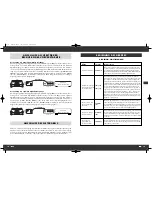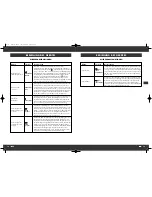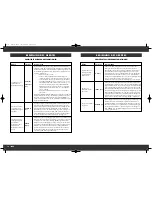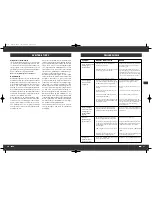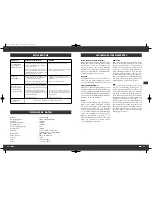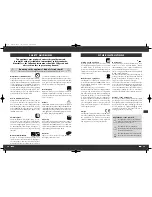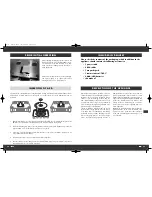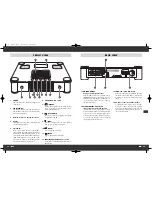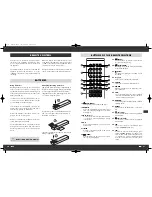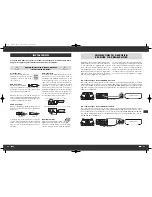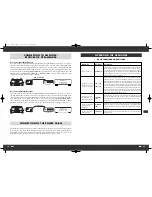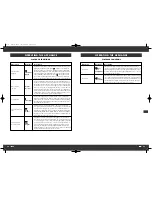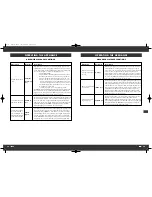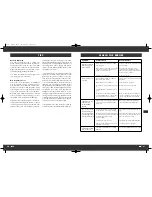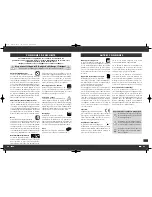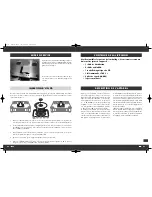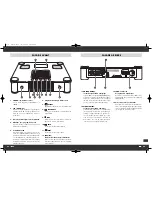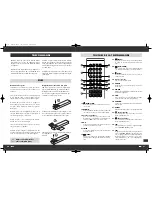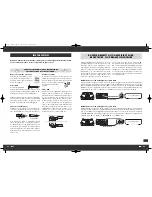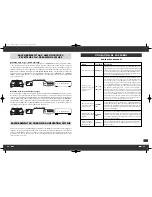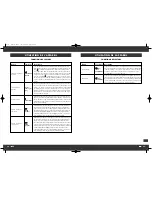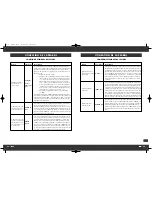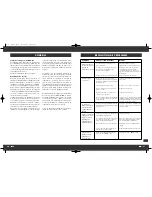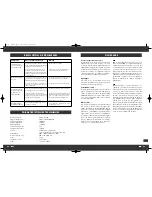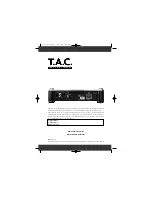
43
tube·amp·company
42
tube·amp·company
D/A converter:
24 bit / 96 kHz
Frequency response:
20 Hz - 20 kHz (±0.5dB)
Total Harmonic Distortion:
< 0.003 %
Signal to Noise Ratio:
> 90 dB
Dynamic Range:
> 100 dB
Audio Output Voltage:
2.5 V
Channel Separation:
> 90 dB
Outputs:
1x XLR stereo, 1x RCA stereo,
1x digital coaxial, 1x digital optical
AC power connection type:
220V – 240V / 50 Hz
Dimensions (W x H x D):
450 x 118 x 390 mm
Weight:
12 kg
Colour:
black / silver
Tubes:
1 x 6Z4, 2 x 6922
TECHNICAL SPECIFICATIONS
Audio Sources/Source devices
These are the components of your HiFi system and
all other appliances, whose sound you want to hear
over the system and are thus connected to the pre-
amplifier, amplifier or receiver. This includes CD
players, DVD players, tuners (radios), cassette play-
ers, DAT recorders, personal computers, record play-
ers, portable audio devices and many more.
Dynamic
The volume difference between the quietest and
the loudest sounds possible in audio signals (wit-
hout distortion or transition to noise).
Input sensitivity
Term for the smallest average (RMS) input voltage
which causes the maximum output power at the
maximum volume setting on the amplifier.
Examples: 100 mV to 500 mV (Millivolts) on high
level inputs, 2 mV to 5 mV on the phono MM input
or 0.1 mV to 0.5 mV on the phono MC input.
dB Level
This is a way of describing any physical quantity;
it is a common measurement for signal voltages
and the volume. It is given in decibels (dB). Al-
ternating signal voltages below 1V (RMS) are des-
cribed as “line level“ voltages, which are suitable
as music signals for amplifier inputs. Inputs on
amplifiers (mostly represented by RCA sockets),
which are designed for signals on the CD player,
tape recorder, DVD player etc. are also referred to
as “line level inputs“. Those signal inputs must not
be confused with inputs that accept preamplified
signals.
RCA
RCA is the American name for coaxial RCA connec-
tors and sockets, originally the abbreviation for
“Radio Corporation of America“, the name of a
United States company. Both the plug and cable
consist of a rod-shaped inner lead and a cylindrical-
shaped outer lead. This enables a mono audio
signal or a video signal to be transmitted. Com-
pared to the XLR plug connector, this type of connec-
tion is also called “unbalanced signal connection“.
XLR
Also: “Symmetrical Connection“ or “Balanced“.
A plug-and-socket connection for audio devices.
It is round (with approx. 1.5 cm in diameter) and
has 3 contacts/pins. XLR is an alternative connec-
tion to RCA used to transmit NF signals in profes-
sional audio equipment. The advantage is one
additional transmission path for the same but
phase inverted signal. If the receiving device can
process this, all inducted noise received in the
cable screen can be eliminated. The signal volta-
ge level used for this type of transfer is higher, so
it is a more robust less sensitive signal path.
GLOSSARY
SEARCH FOR ERRORS
Symptom
Possible Cause
Countermeasure
No audio playback
on one channel
One of the signal cables between CD player
and amplifier input has not yet been plugged
in or is defective.
One of the loudspeaker cables or (if you are
using pre & main amplifiers) one of the signal
cables between pre and main amplifier is not
correctly connected or is faulty.
Check the cable connections, tighten them if
necessary.
Check all the connections of the amplifiers
and whether the loudspeakers are working.
Poor sound quality
Analogue audio outputs of the CD player are
connected to phono inputs of the
amplifier/receiver/preamplifier.
The cable connections are not tight, the con-
nectors are dirty or a cable is defective.
Use a normal high level input (“CD” or “LINE
IN”) on these devices.
Check the cables and cable connections.
The remote control
cannot perform
any functions
No batteries inserted in the remote control,
batteries are not inserted correctly or are
depleted.
The line-of-sight between the remote control
and the unit is obstructed, the range was
exceeded or the hand unit was operated from
a position too far to one side.
The unit is not switched on.
Check and replace the batteries if necessary.
Try to point the remote control at the front of
the unit only when the sight-line is clear,
within a 7-metre distance and, if possible,
facing the unit.
Switch on the unit.
Humming low
frequency noise is
audible, even as
no audio source is
playing back
See section "Net frequency noise" in the
chapter "Tips".
See section "Net frequency noise" in the
chapter "Tips".
C-60 24.04.2009 16:53 Uhr Seite 42

